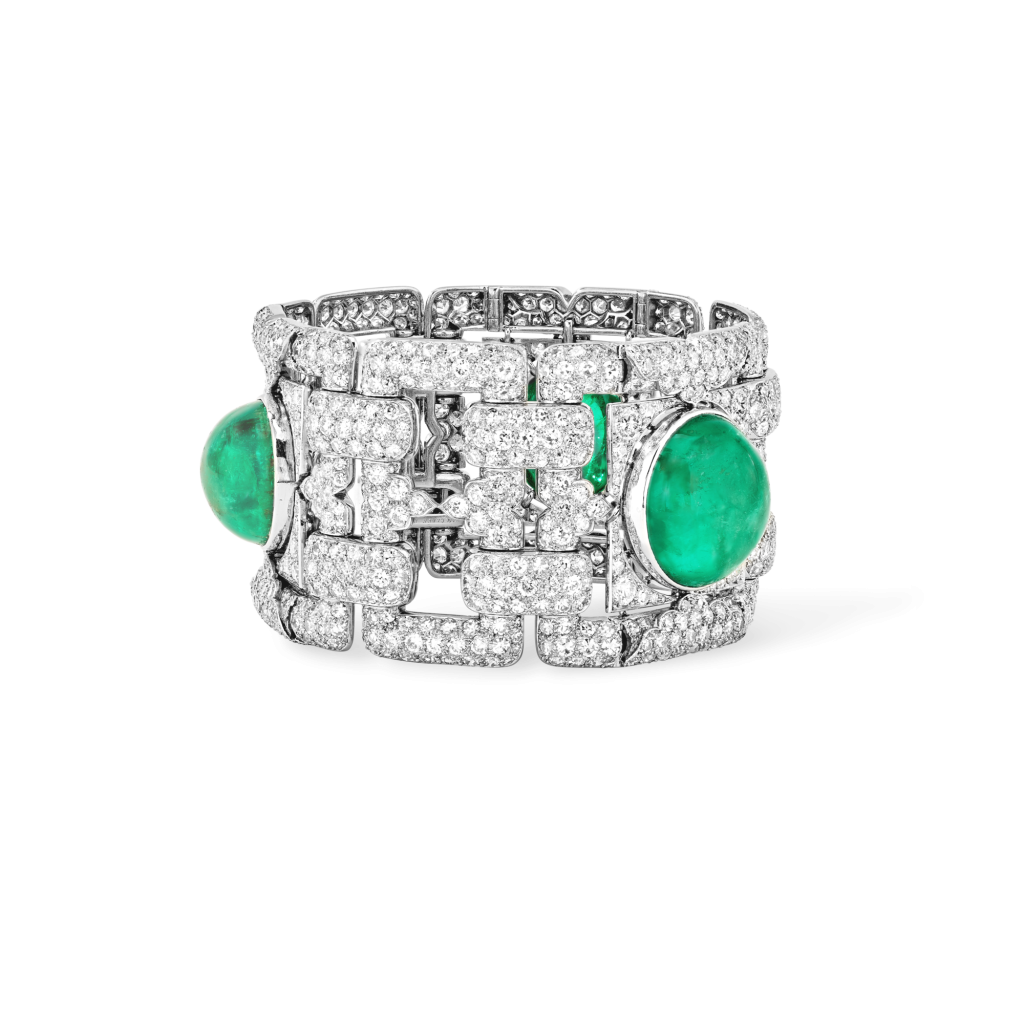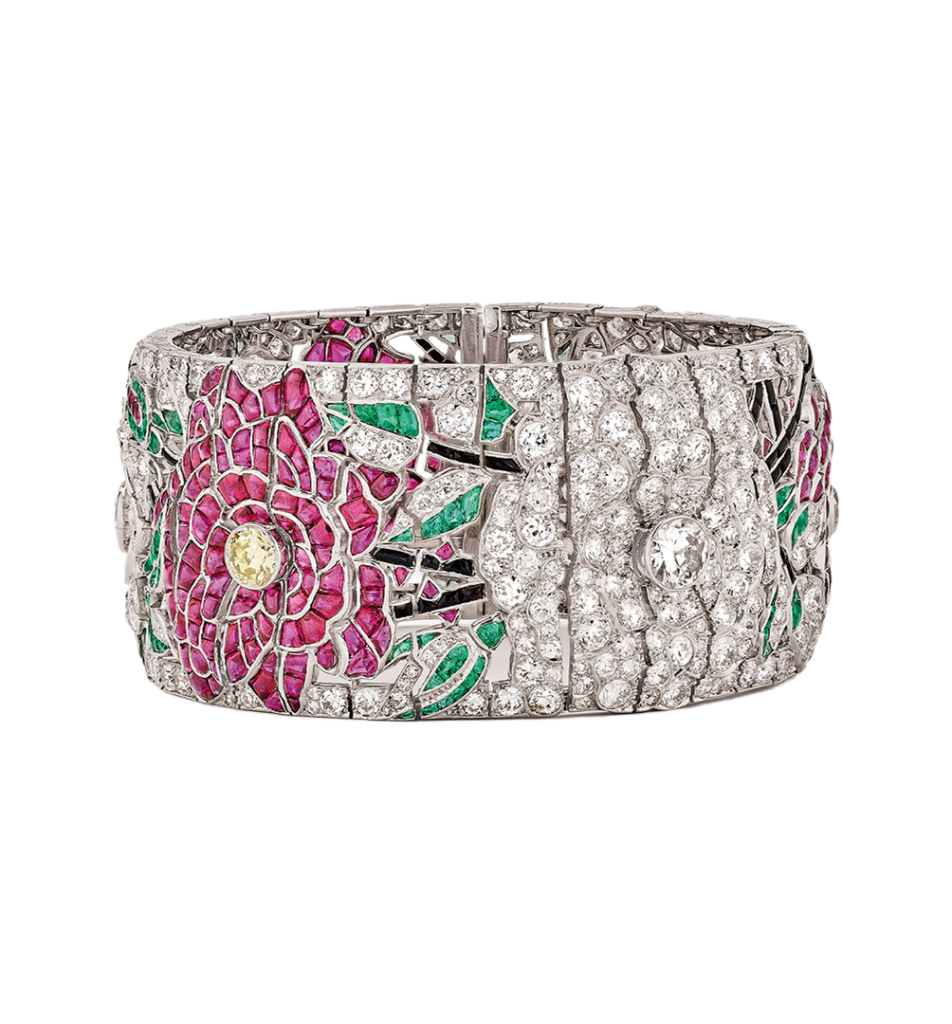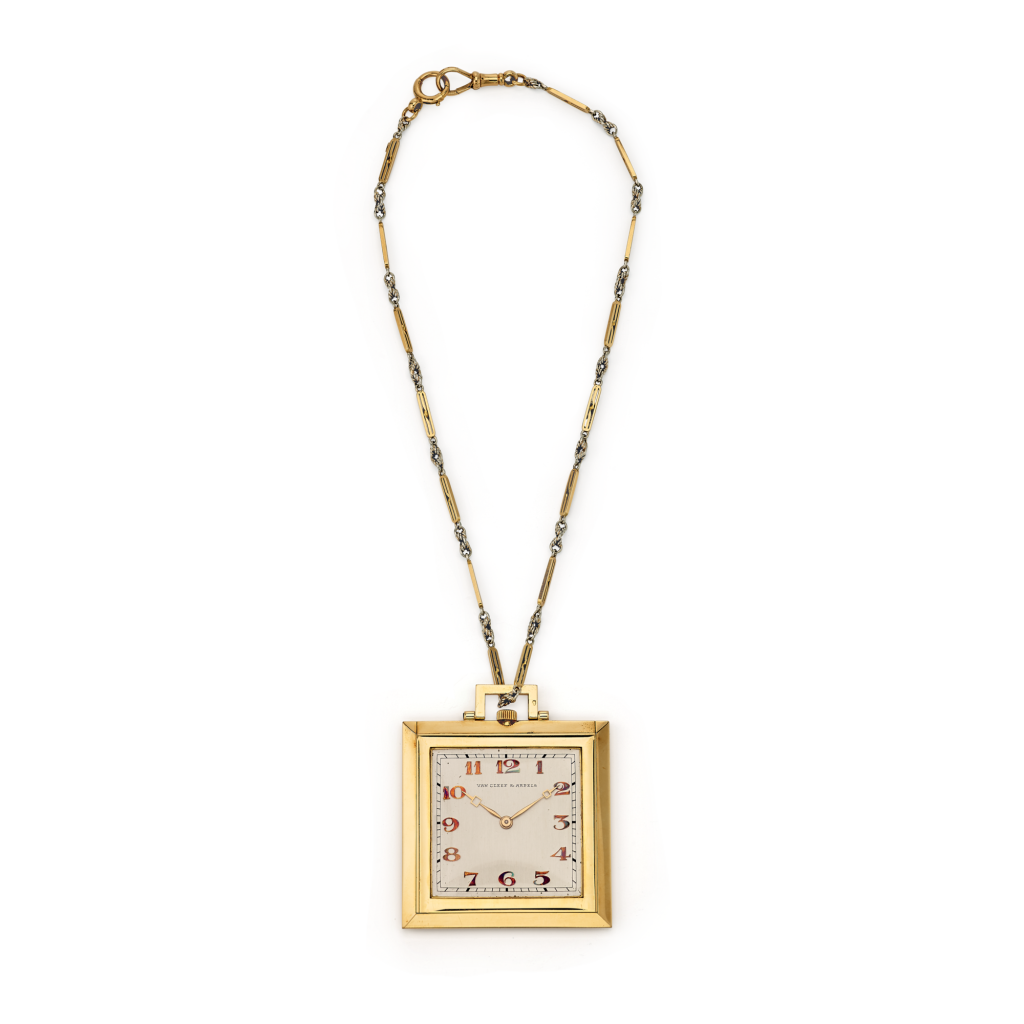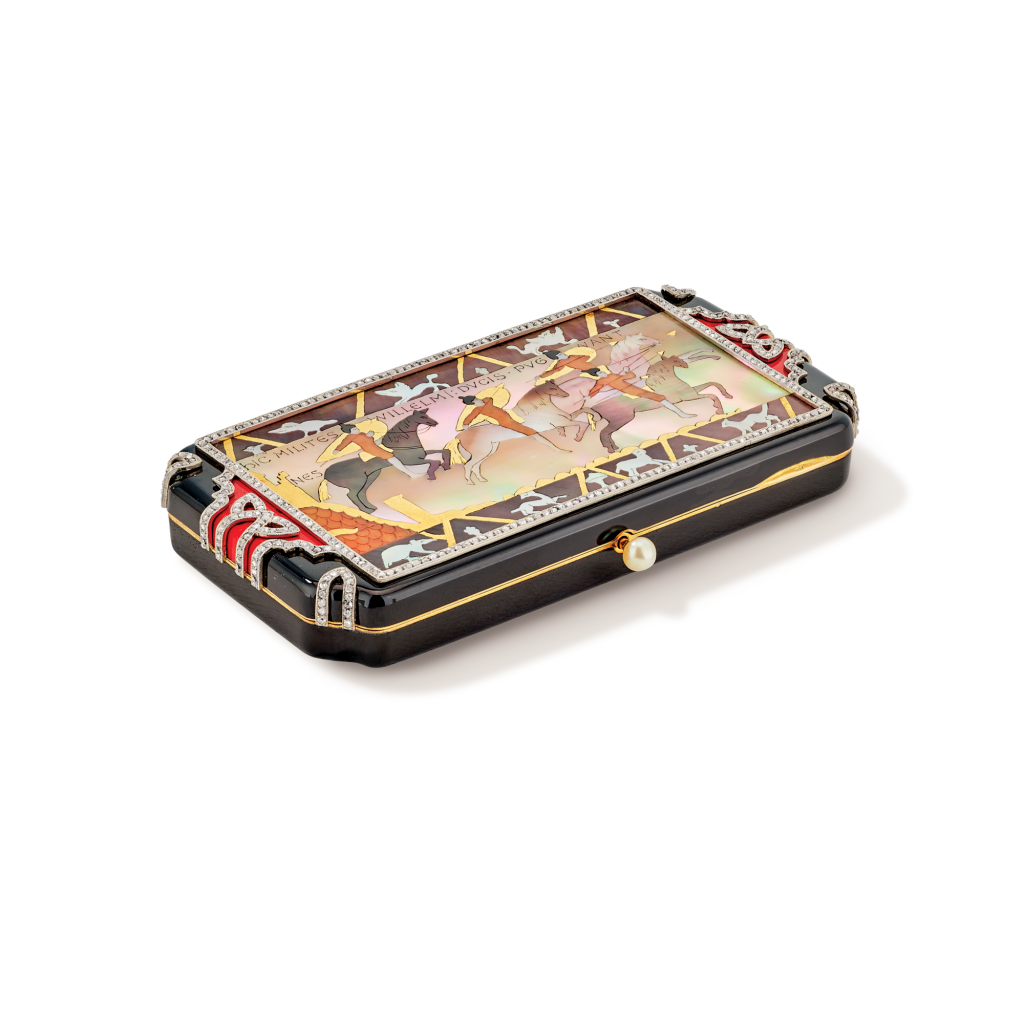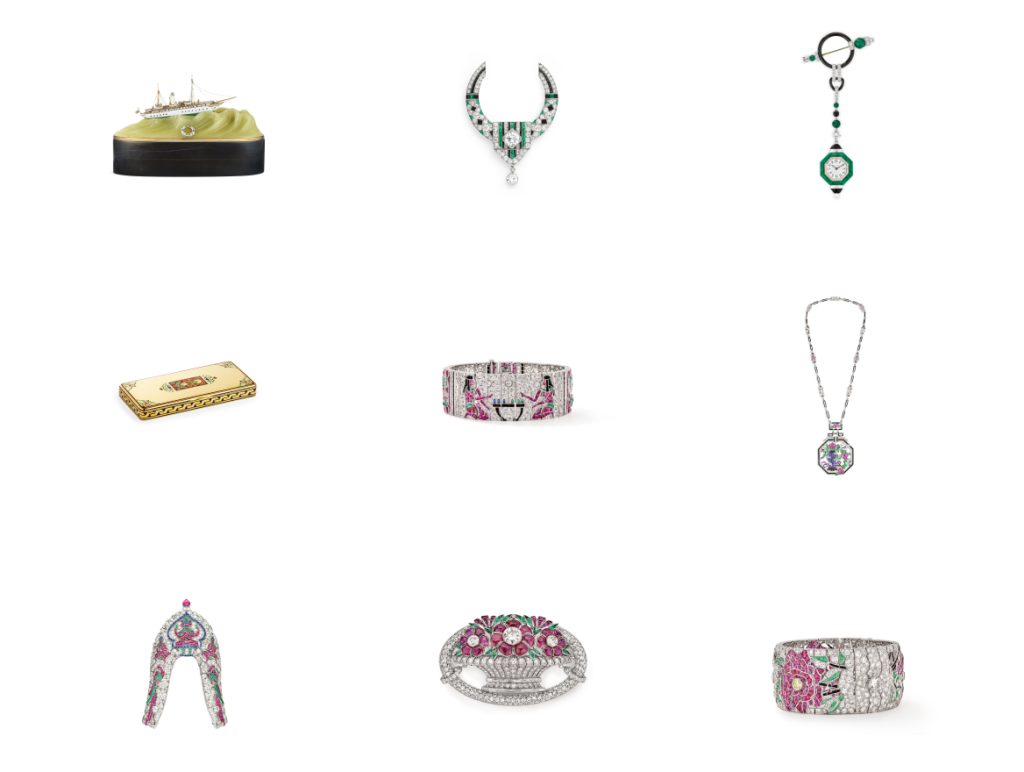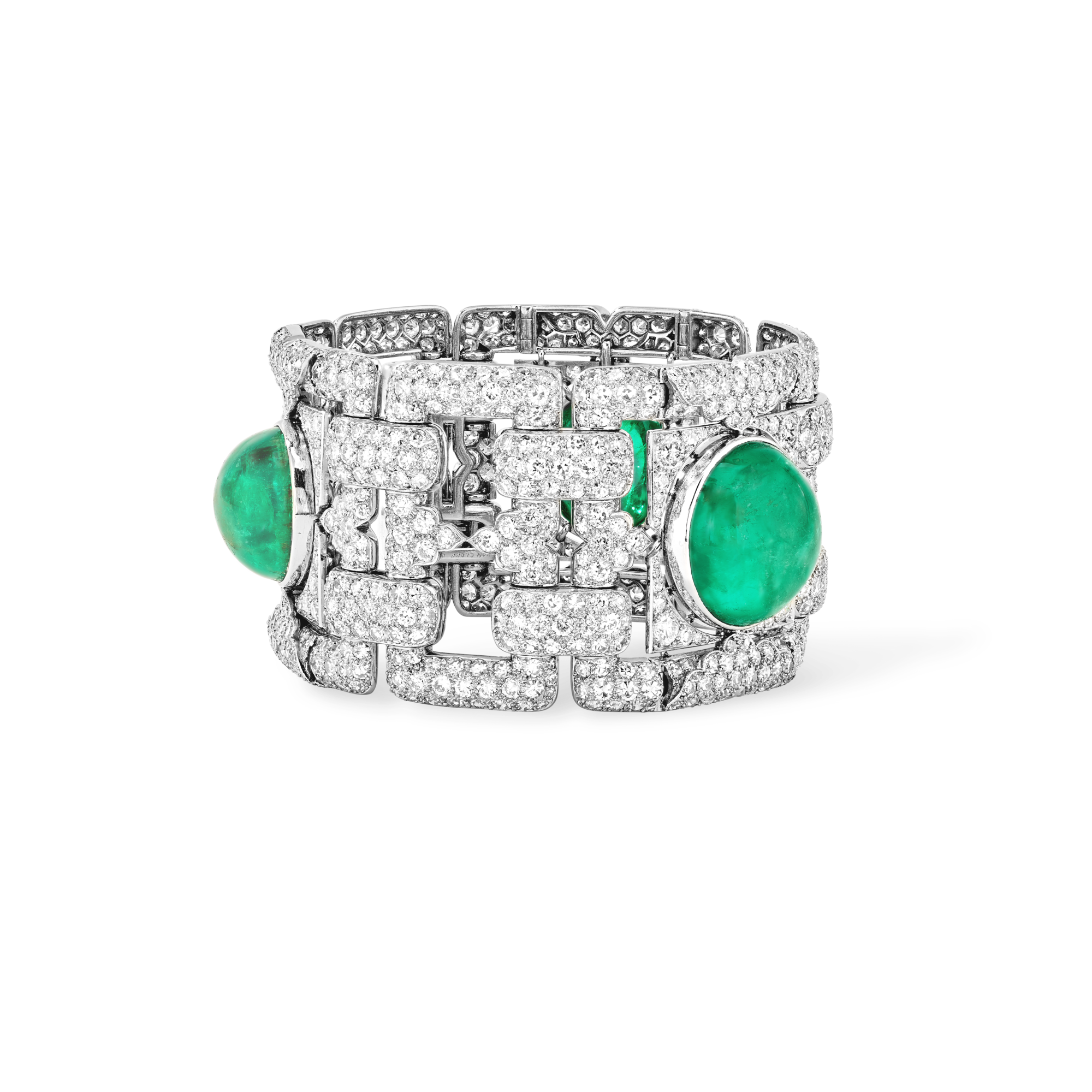
Bracelet

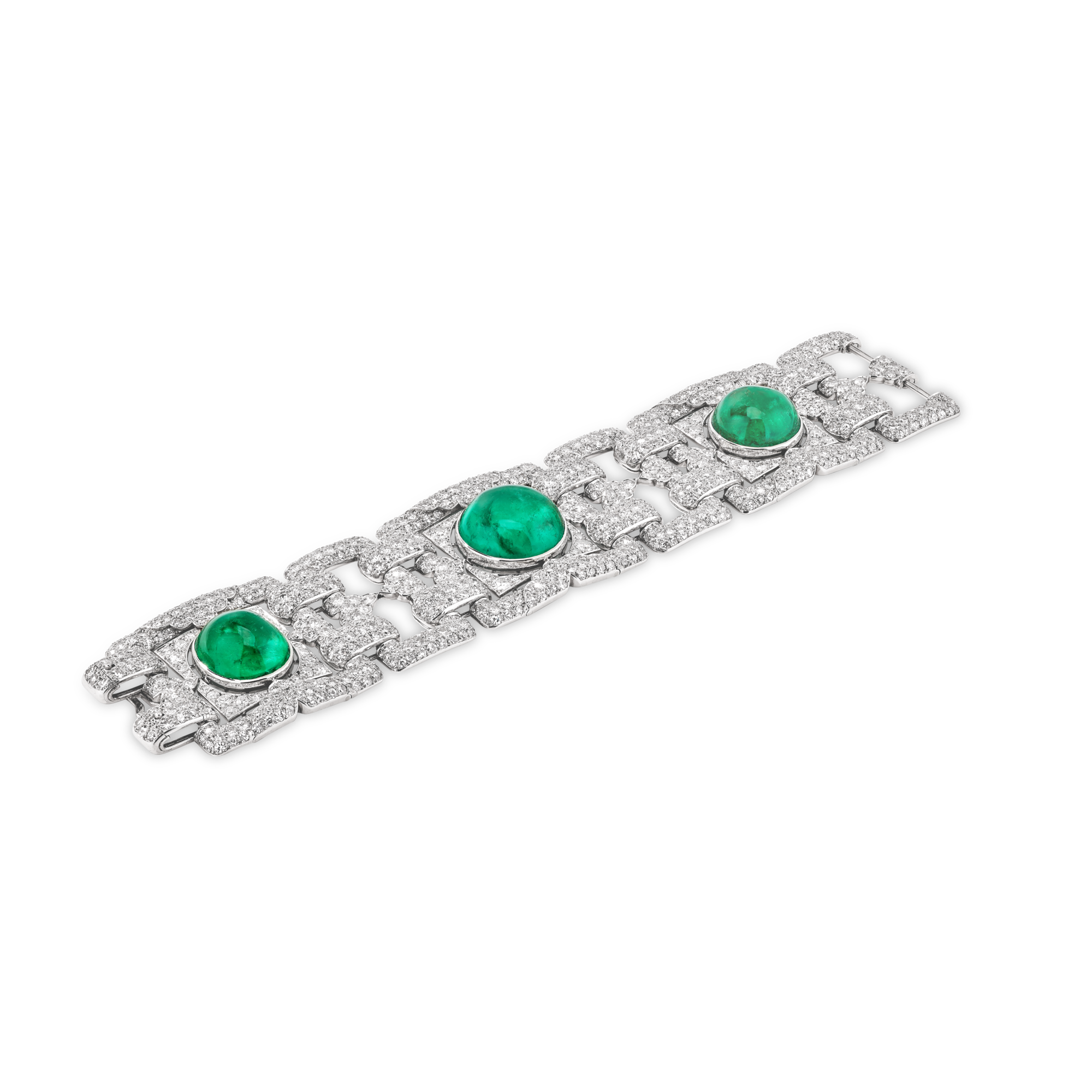
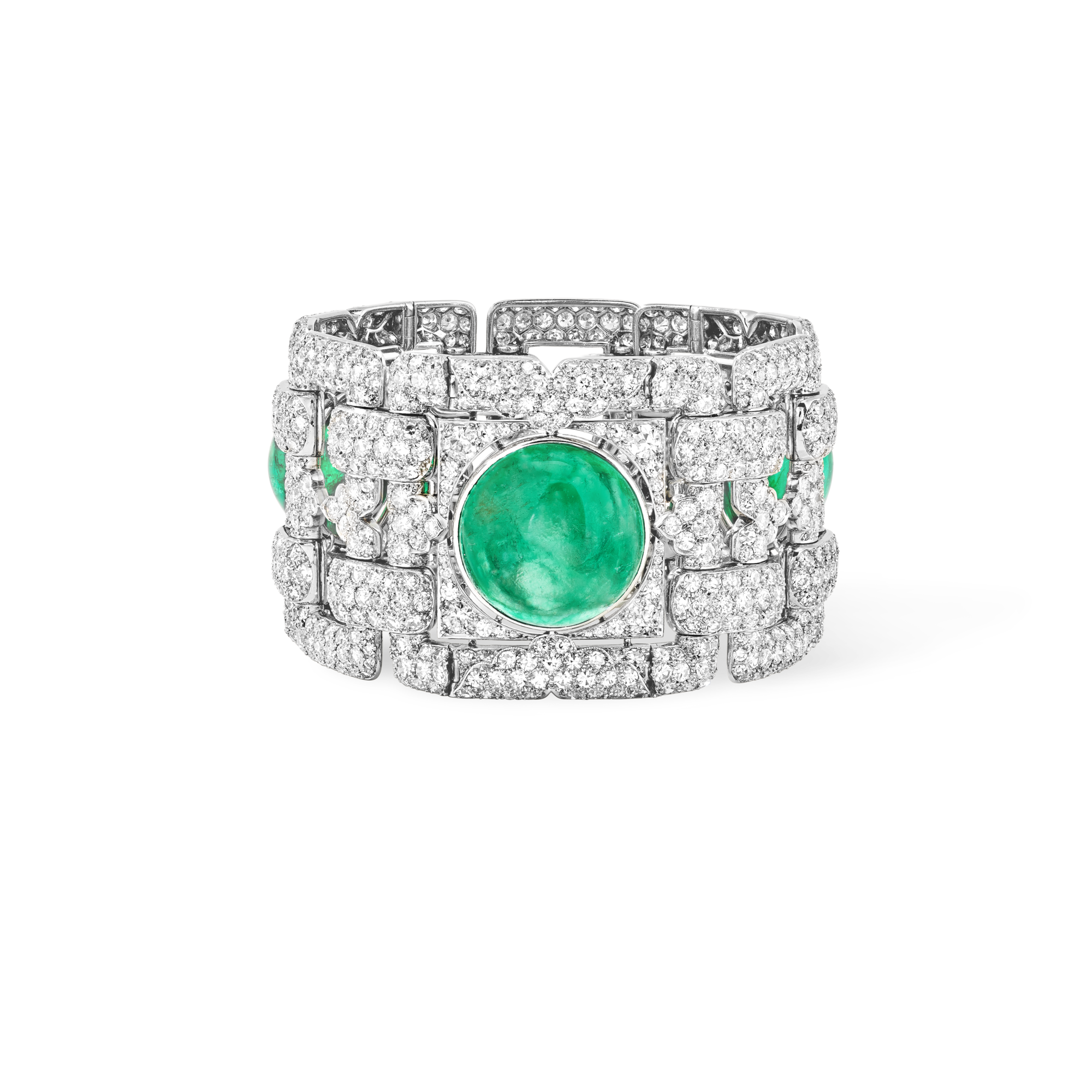
Creation details
- Creation year 1925
- Stone Diamond
- Stone Emerald
- Material Platinum
- Usage Bracelet
- Dimensions 193 × 39 mm
This bracelet, presented at the 1925 exhibition which celebrated the advent of the Art Deco movement, formed a link between the jewelry arts of the 1920s and 1930s as well as illustrating a transition in Van Cleef & Arpels’ artistic approach…
It was composed of quadrangular links pave-set with brilliant-cut diamonds, interspersed with three round, bezel-set emerald cabochons. These emeralds were framed by triangles with a curved inner edge forming the angles of a square. The overall linear aspect of the piece was softened by festooned triangular motifs decorating the sides of the links.
The stamp of Class XXIV
The preparatory gouaché sketch of the bracelet bears the stamp of the President of Class XXIV, which leads us to believe that it was almost certainly presented at the 1925 Exposition internationale des arts décoratifs et industriels modernes in Paris.
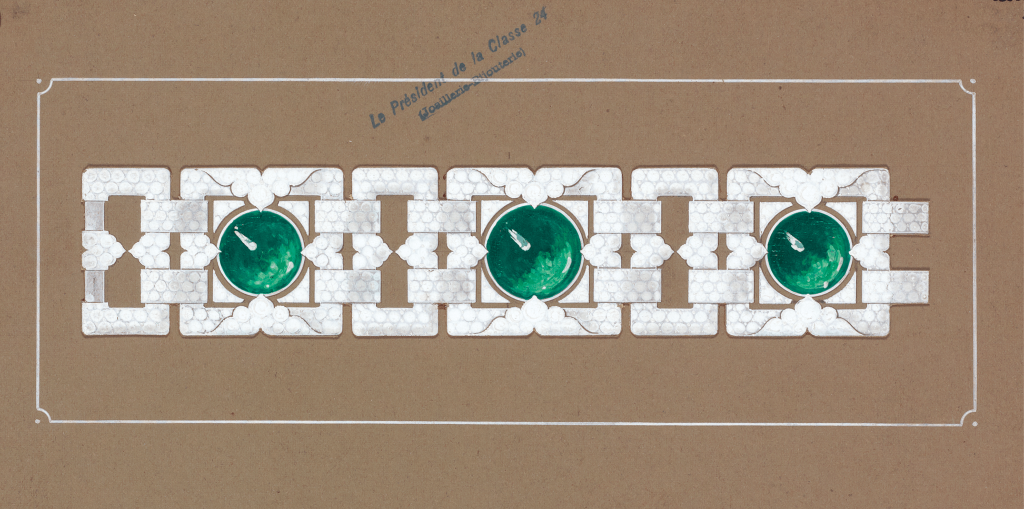
Its design contrasted with that of the numerous band bracelets of the first Art Deco style, like the so-called “roses” bracelet.
The geometric inspiration of 1925
It consisted of stylistic principles that were introduced as early as 1925, but which did not really make their mark until the end of the decade in the exhibition dedicated to the jewelry arts and goldsmithery held at the Palais Galliera in 1929. At that time, “the geometric inspiration of 1925 was far from extinct”1Henri Clouzot, “Réflexions sur la joaillerie de 1929,” Le Figaro, arts supplement (July 11, 1929): 685.. A new ornamental language evolved while motifs from the eighteenth-century decorative tradition were gradually abandoned. This pared-down ornamentation was coupled with a new sense of volume given to jewelry. As early as 1925, therefore, this bracelet broke with “flat jewelry” such as band bracelets, which were “no longer in favor”2Georges Fouquet, “La bijouterie et la joaillerie modernes,” Le Figaro, illustrated supplement (June 13, 1929): 607. in 1929. The pieces exhibited at the Palais Galliera “displayed sharp relief, sometimes using cabochons” as seen in this 1925 bracelet.
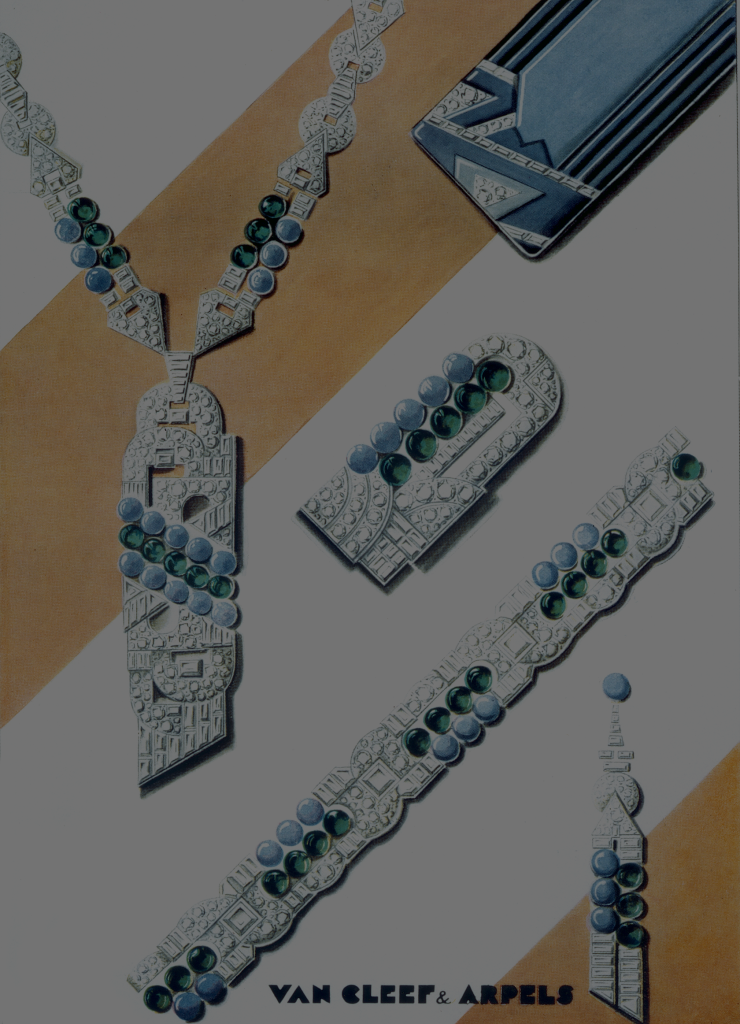
To go deeper
